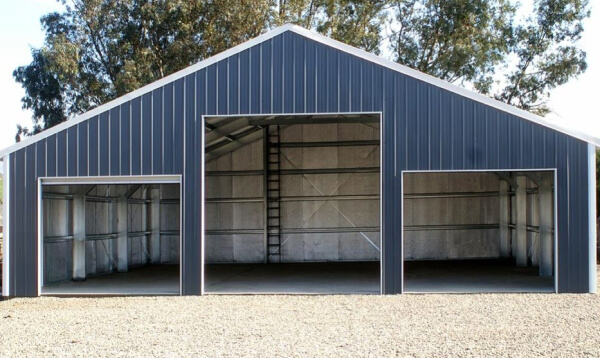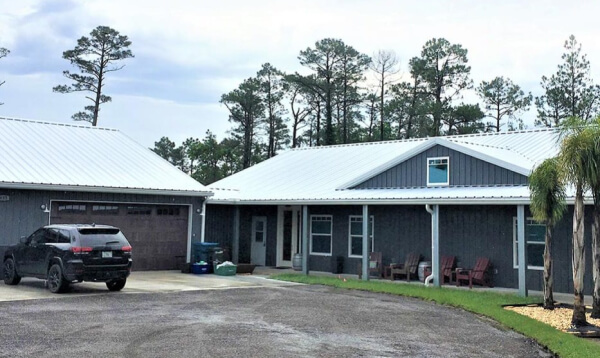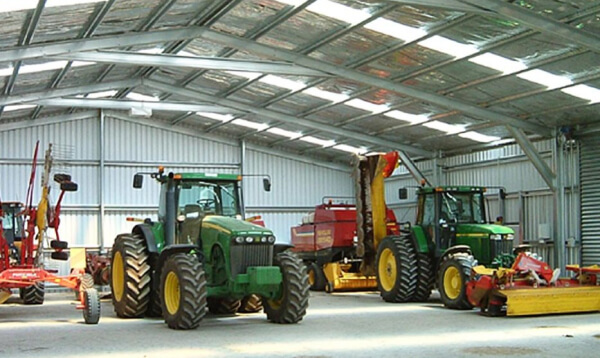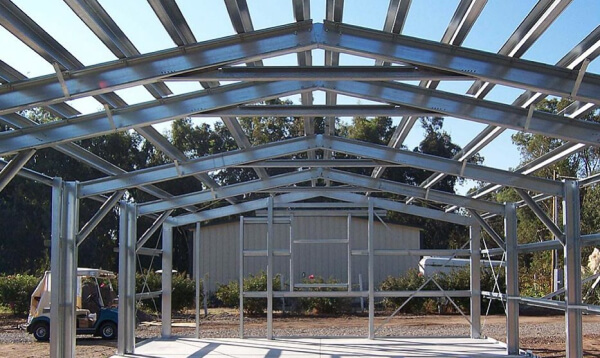
Cold Form
Cold Form
What is Cold Form steel? Why is it a perfect solution for those looking to build quickly?
Cold Form Steel, or CFS are steel products designed using cold-working processes. These processes are carried out at room temperature and include steps like stamping, pressing, bending, and rolling. Today, cold-rolled steel sheets are widely used across the manufacturing industry, mainly because of their versatility and lightweight.
Thin gauge sheets of Cold Form Steel are used as they provide structural or non-structural support to items such as beams, joists, studs, columns, and built-up sections. Cold Form Buildings are gaining more popularity each day since their standardization in 1946.
Cold Form Steel is used in building garages, roofing systems, barndominiums and workshops among many others. Cold Form Steel buildings are developed using structural quality sheet steels. These sheets are built into C-sections by roll forming the steel.
Cold Form Steel sheets do not need heat to formulate a shape, unlike hot-rolled steel. Today, many steel grades are available in the market for non-structural and structural applications. Why should you consider it? Cold Form Steel buildings are energy efficient, durable, and have reduced construction costs.
These qualities make Cold Form Steel apt for residential construction. Due to its wide range of structural applications, we can see extensive use of CFS in multi-housing and mid-rise buildings. Cold Form Steel framing is also famous for its cost-efficiency. It has a long record of offering cost-effective benefits during the entire construction process. In addition to that, CFS comes with lower insurance rates, more accuracy, shorter construction cycles, and improved design efficiency.
Cold Form building technology is the perfect solution for those looking to build quickly. At Coastal Steel Structures we don’t prefer one building system over the other. I-Beam building technology has a world of benefits in comparison to Cold Form. You just have to consider the right technology that works for your project and timeline. Here are some key benefits to selecting a Cold Form building system.
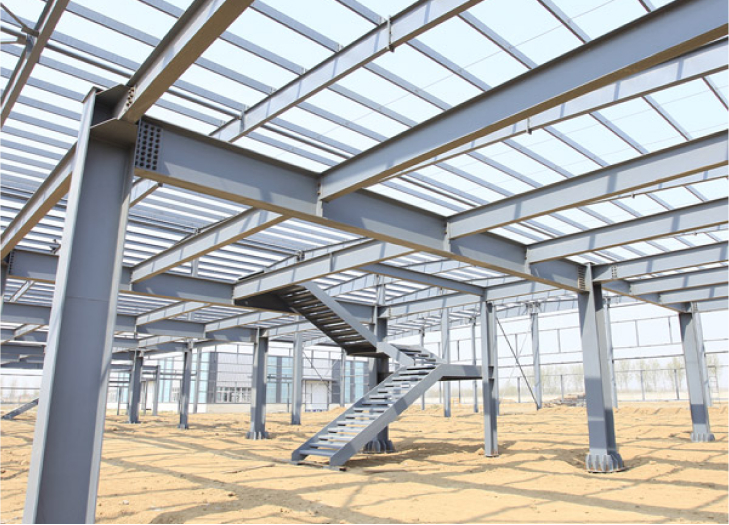
Durability
All framing components are G-90 Galvanized, this provides maximum protection against erosion and rusting. All buildings are custom engineered to meet local code.

Customization
Cold Form buildings can be customized to suit your needs and built to spec. Cold Form structures can also handle higher roof pitches as well as mezzanines.

Convenience
Foundation engineering and full installation manuals are provided in the construction process. All construction materials are pre-cut, pre-drilled, and pre-welded. There are no weld-points which make building erection simple.

Sustainability
Cold Form steel offers minimal carbon emissions and waste. These buildings are energy efficient and are less costly to maintain.

Speed
Engineering in as little as 5-7 days and you can have steel on the ground in as little as 4 weeks.
RESIDENTIAL APPLICATIONS
Cold Form steel buildings and residential projects are the perfect fit. Cold Form provides the design, fabrication, and construction flexibility to bring your project to life. These buildings are durable, energy efficient, and have reduced construction costs. Keep reading to learn more about all the different residential applications you can use for Cold Form buildings. Who knows? Maybe you’ll get inspired!
-
Garages
Consider using Cold Form buildings to protect valuable assets and equipment on your property with a workshop or garage that can be designed in a variety of sizes. Get your garage faster without sacrificing design. Whether you are looking to protect your car collection, or an investment in equipment for your business, a Cold Form steel garage is a practical investment that is a reliable material and will give you peace of mind.
-
Workshops
Don’t have enough space inside of your current workshop. Do you have the land and space you need to create a bigger space? Take your workshop to the next level and get more space that you expected with a Cold Form steel building. If it’s time to expand your workshop, this building can give you the space you need to become more efficient. Look at some of the workshops we have fabricated over the years.
-
Barndominiums
A Cold Form Barndominium offers durability and safety for decades over wood so that a family can be rest assured that their home is strong enough to last for generations. Cold Form Steel building homes are becoming increasingly utilized in modern home construction. It offers reduced costs compared to traditional construction and can be customized to meet the size, design, and accessories you require and can be delivered.
-
Roofing Systems
Cold Form roof panels have you covered and can handle wind uplifts and snow loads that meet and exceed codes. Not only do they serve as a structural component, but they are also dynamic enough to meet your architectural needs as well.
OUR PROCESS
Customer service and a hands-on approach is what sets Coastal Steel Structures apart from the rest of the pack.
1. Speak to a Building Expert to Plan Your Project
2. Get a Quote & Project Scope
3. Project Manager assigned to you that will provide concierge level services through the entire process
4. Building Fabrication
5. Building Delivery
6. Building Construction
LETS WORK TOGETHER ON YOUR DREAMS!
Are you ready to start your steel building journey? Request a quote today and speak to one of our experienced team members to set you up for success and make your vision a reality!
GET A QUOTE
